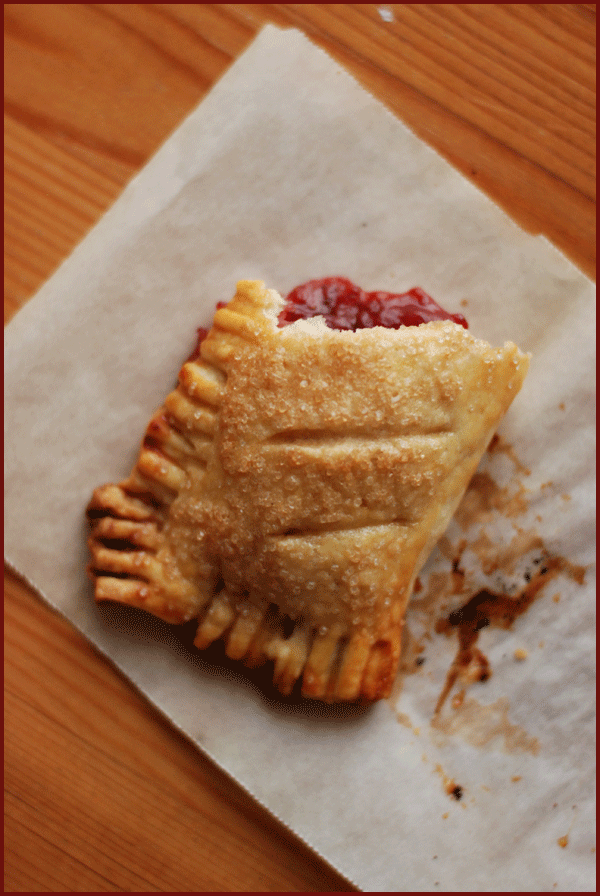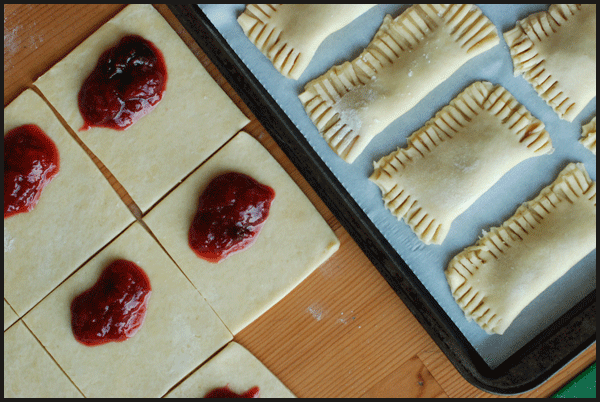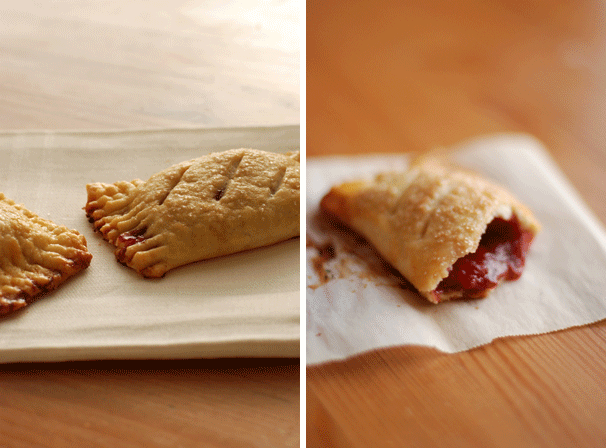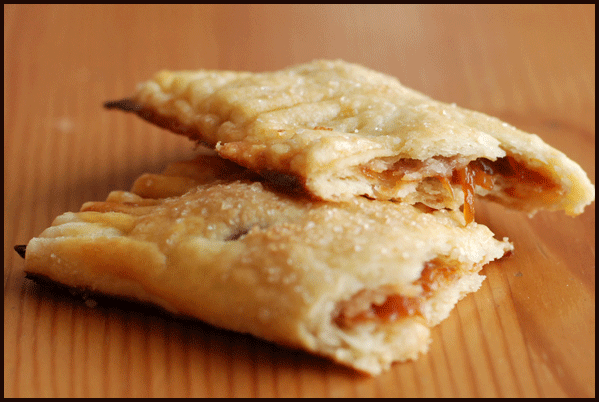Pies are finicky, finicky things. Taming bursting, juicy berries into a perfect pie is the ultimate challenge of summer, and getting that bottom crust to stay crispy requires nothing short of a miracle. I’ve tried everything: I paint the inside of the bottom crust with egg before adding the fruit, I’ve drained the fruit, tossed it with extra flour, with cornstarch, with tapioca, with playdough, and still — apple pies are fine, but the piece of dough resting beneath those juicy rasp/straw/blue/blackberries just gets suffocated by all that juice.
If you’re reading my pie confession and think, “don’t give up just yet!,” that’s great. I’m ready for help. Have any advice for making the perfect berry pie? Don’t hesitate to share it in the comments. (Mrs. Wheelbarrow, I’m looking at you — I know you’re canning pie filling, and I’d love your tips!) But amid this pie nay-saying, don’t for a second think I’ve given up on crusty summer fruit desserts. Au contraire, mon frere! I have moved on to smaller but better things. Hand pies are the way of the future.
No more soggy bottom crusts, no more fretting over runny filling. Hand pies eliminate the guesswork. Their top and bottom crusts stay equally flaky and crispy; their innards, made here with jam, are sure to be perfectly thick without any of that cornstarch flavor. And I shouldn’t forget to mention that hand pies are perfectly portioned, so no more ruining that first slice of pie.
Flavors are limited only by your imagination. I used some of last year’s butterscotch peach preserves to fill half of my batch, and Amanda Hesser’s strawberry-chile preserves to fill the other. If I’d made the sour cherry jam one day earlier, we’d be having sour cherry hand pies, too. Maybe next year week.
Jam-Filled Hand Pies
For the crust:
2 1/2 cups all-purpose flour
2 tablespoons sugar
1 teaspoon salt
2 sticks unsalted butter, very cold, cut into small pieces1 1/2 cups jam(s)
1 egg, for brushing
turbinado sugar, for sprinklingPut all ingredients in a mixing bowl or a food processor. If using a processor, pulse 6-8 times, until butter is in pea-sized pieces. If mixing manually, use either a pastry cutter, a fork, or your fingers (that’s what I used) to break the butter into the flour, stopping when the butter is in pea-sized pieces. Sprinkle 1/2 cup ice cold water over the flour-butter mixture, and use a stiff spatula to fold together. It really should be moist enough, but if it’s not, add a couple more tablespoons water, just until the dough comes together. Wrap the dough in plastic and refrigerate about 30 minutes, until no longer soft.
Preheat oven to 375. On lightly floured surface, roll out half the dough to about 1/4-inch thick. slice into 4″ x 6″ rectangles. With the short end of a rectangle facing you, spread 1 1/2 tablespoons of jam horizontally, a bit more than halfway past the center, leaving a 1/2-inch border on either side. You’re going to fold the long half over itself, so spread jam such that after folding the tart in half, you’ll have jam running throughout the tart. Use the tines of a fork to seal the edges of each tart. Brush the tops with egg, sprinkle with sugar, and make three small diagonal incisions on each tart.
Line two baking sheets with parchment paper, and place finished tarts on the sheet about 1/2 inch apart. Bake 25 minutes, until tops are a light golden brown and pastry no longer feels raw or soft. Transfer to a rack to cool completely.




Comments on this entry are closed.
Lattice top! That’s what wet fillings need, so there’s plenty of space for juices to cook out (aka make your kitchen smell awesome) without soaking down into the bottom crust. I made a rhubarb pie with a lattice top this weekend and it was wonderful and not nearly as difficult as it looks.
Adrienne, So true — the lattice lets the pie breathe. Good call!
Wow. Those look awesome. Homemade pop tarts! 🙂
Now I can attest that I too have the same issue!
When you finally figure out the solution, pass on the tiP!
Those look superb – I love anything jam, and fruit desserts/baked goods are my favorites.
Hi Rivka, tried to post a comment but got denied – weird – anyway, here we go again.
Yes, lattice tops are perfect for reducing the liquid in the pie filling, but you need a binder. Flour, tapioca pearls, or cornstarch – with cornstarch being my personal fave, as the liquids remain clear, but gelled. Prettier! Dabbing butter across the top of the filling also helps develop a better set, I think. If you don’t feel like lattice, it’s nice to just cut out shapes, hearts or circles, for instance, or whatever cute cookie cutters you have. Roll out the top crust, measure and trim, then stamp out shapes before draping the crust over the filling. Stars works beautifully for Fourth of July pies.
Yes, yes — how could I forget? The cookie-cutout pie crusts are my favorite. I have some lovely scalloped cutters that I used last year for a strawberry rhubarb number. The butter on top is a great idea — will definitely give it a try. Thanks!
Hand pies! Oh the memories. I miss snippets of your cooking. Hope all is well!!
It misses you, dear!
in the martha stewart baking handbook there is a recipe for slab pie… and its the most perfect, delicious pie ever. the bottom crust stays flakey and firm, and the filling kind of congeals to a perfect consistancy… hardly runs at all when you slice into the pie. I don’t know what it is specifically about that pie dough or the filling that makes it come out just right every time, but it works!